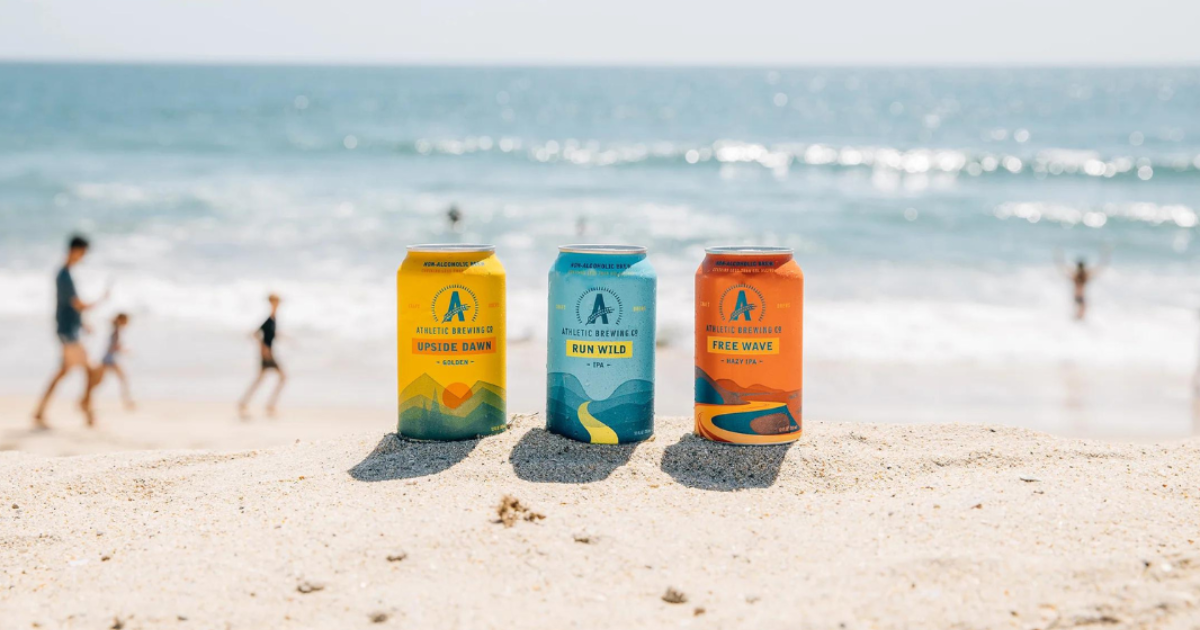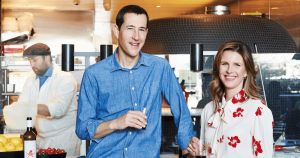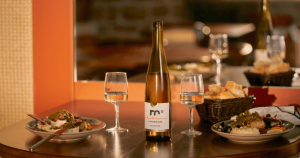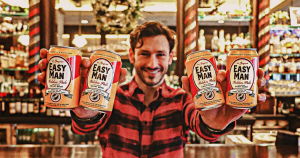Non-alc is becoming a year-round preference
Non-alc options are gaining momentum, transcending seasonal trends to become a year-round preference. The latest data from NielsenIQ indicates a 32% surge in sales of non-alc spirits, wines, and beers in US supermarkets, drug stores, and mass merchandise outlets over the past year. The growth is also reflected in online sales, with platforms like Drizly reporting a 54% increase in non-alc beverage sales in the first half of the year.
This uptick is not just a fleeting response to initiatives like Dry January or Sober October; it reflects a deeper, more enduring change in consumer behavior—a broader move towards moderation. This shift is further evidenced by the fact that 94% of non-alc buyers continue to purchase alcoholic beverages, up from 82% last year. Integrating non-alc options into alcohol consumption patterns is particularly pronounced in the beer category, where non-alc options now account for 2% of all beer sold in grocery stores.
Source: NielsenIQ
The UK’s definition of wine may be changing
The UK is planning to redefine its legal definition of wine, lowering the minimum alcohol by volume (ABV) from 8.5% to 0%. This move aims to simplify its market, which currently labels anything below 8.5% ABV as a “wine-based” product. The UK’s Wine and Spirit Trade Association has expressed the need for clarity to prevent market confusion, indicating a willingness to collaborate on the new labeling rules.
While this new definition would increase marketing flexibility for non-alc brands, it could also set consumer expectations too high. Non-alc wine is a notoriously tricky category within alcohol alternatives. Perhaps that’s why we’re increasingly seeing such beverages framed as “blends” or “proxies” (see Surely’s latest launch, Red Blend).
Source: Wine Enthusiast
Alcohol mitigation technology is advancing
Safety Shot announced promising results from a test of its patented beverage designed to expedite the reduction of blood alcohol content (BAC). In a recent study, participants who consumed Safety Shot after alcohol intake showed a statistically significant average reduction in BAC of 0.079% per hour, compared to just 0.01% per hour in the control group. This preliminary study sets the stage for a more extensive double-blinded placebo-controlled trial to validate these findings further.
If successful, Safety Shot could significantly influence the way individuals manage alcohol consumption and its after-effects. It will be interesting to see if such innovations will affect non-alc market growth.
Source: Safety Shot press release
Get the latest industry developments in your inbox. Subscribe to The Navigator, our weekly newsletter tailored for non-alc brand founders and operators.






